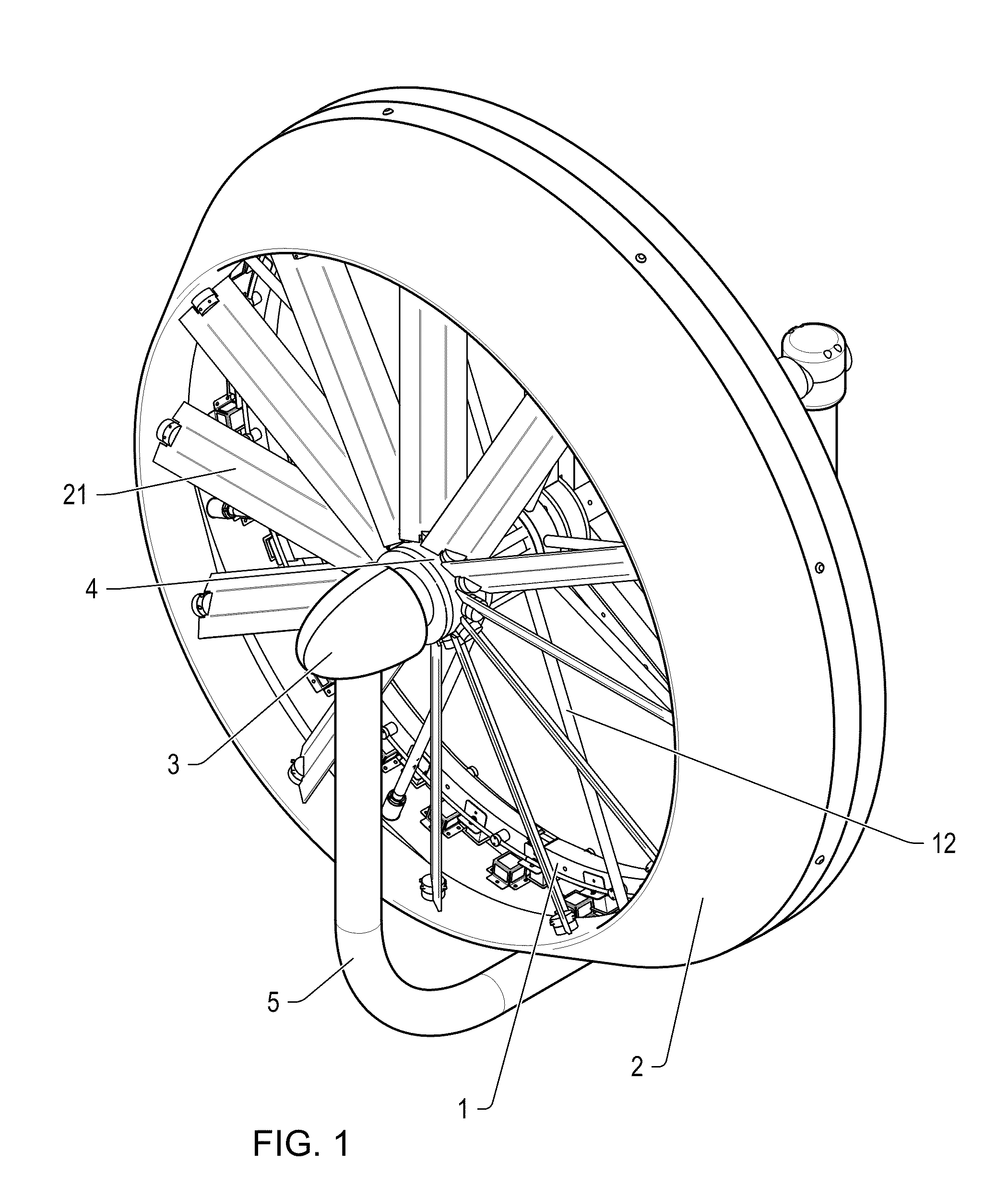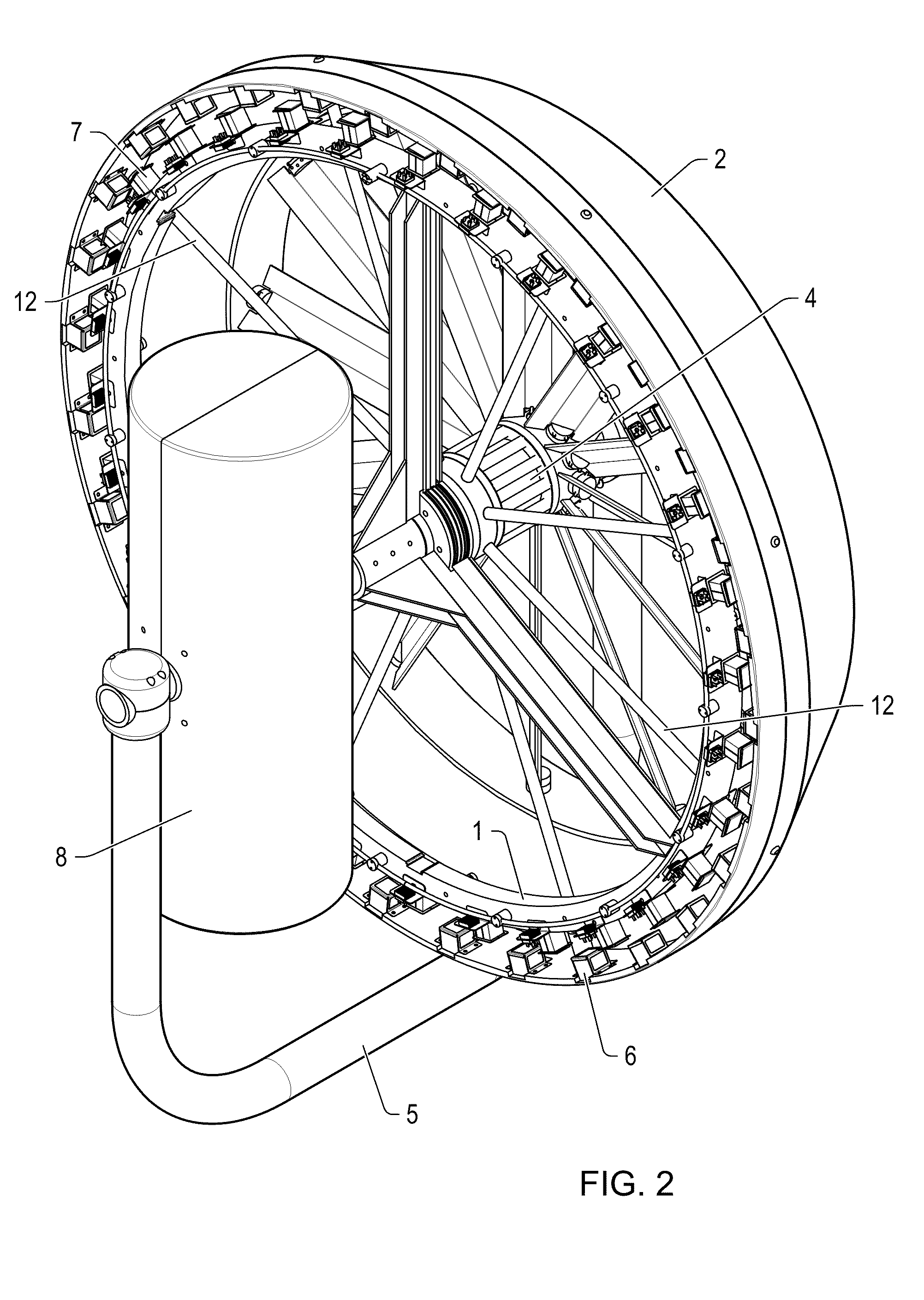Direct Current Brushless Machine and Wind Turbine System
a brushless machine and wind turbine technology, applied in the direction of machines/engines, liquid fuel engines, electric generator control, etc., can solve the problems of inefficient idle rate, high capital investment of remote power installations, and serious reliability and intermittent generation nature of wind power
- Summary
- Abstract
- Description
- Claims
- Application Information
AI Technical Summary
Benefits of technology
Problems solved by technology
Method used
Image
Examples
Embodiment Construction
[0022]A preferred embodiment of a wind turbine in accordance with the present invention comprises a ducted wind turbine having the rotor and stator positioned near at end of the fan blades away from the axis of rotation.
[0023]Ducted wind turbines include a structure near the turbine that affects the wind flow through the turbine blades. Wind turbines of all sizes have long been built with associated structures and housings that provide aerodynamic features which affect the air flow through the turbine. The Persians, several thousand years ago, at the time of the attempted Greek conquests, were building various cooling towers, and small open fan type turbines, which were placed within sided structures, open in the direction of incoming and exiting wind flow. Some early 20th Century machines also featured housings and blade tip confinement schemes for legitimate reduction of power limiting blade tip vortices generated at radial right angles to the axial air flow.
[0024]A study funded b...
PUM
 Login to View More
Login to View More Abstract
Description
Claims
Application Information
 Login to View More
Login to View More - R&D
- Intellectual Property
- Life Sciences
- Materials
- Tech Scout
- Unparalleled Data Quality
- Higher Quality Content
- 60% Fewer Hallucinations
Browse by: Latest US Patents, China's latest patents, Technical Efficacy Thesaurus, Application Domain, Technology Topic, Popular Technical Reports.
© 2025 PatSnap. All rights reserved.Legal|Privacy policy|Modern Slavery Act Transparency Statement|Sitemap|About US| Contact US: help@patsnap.com



